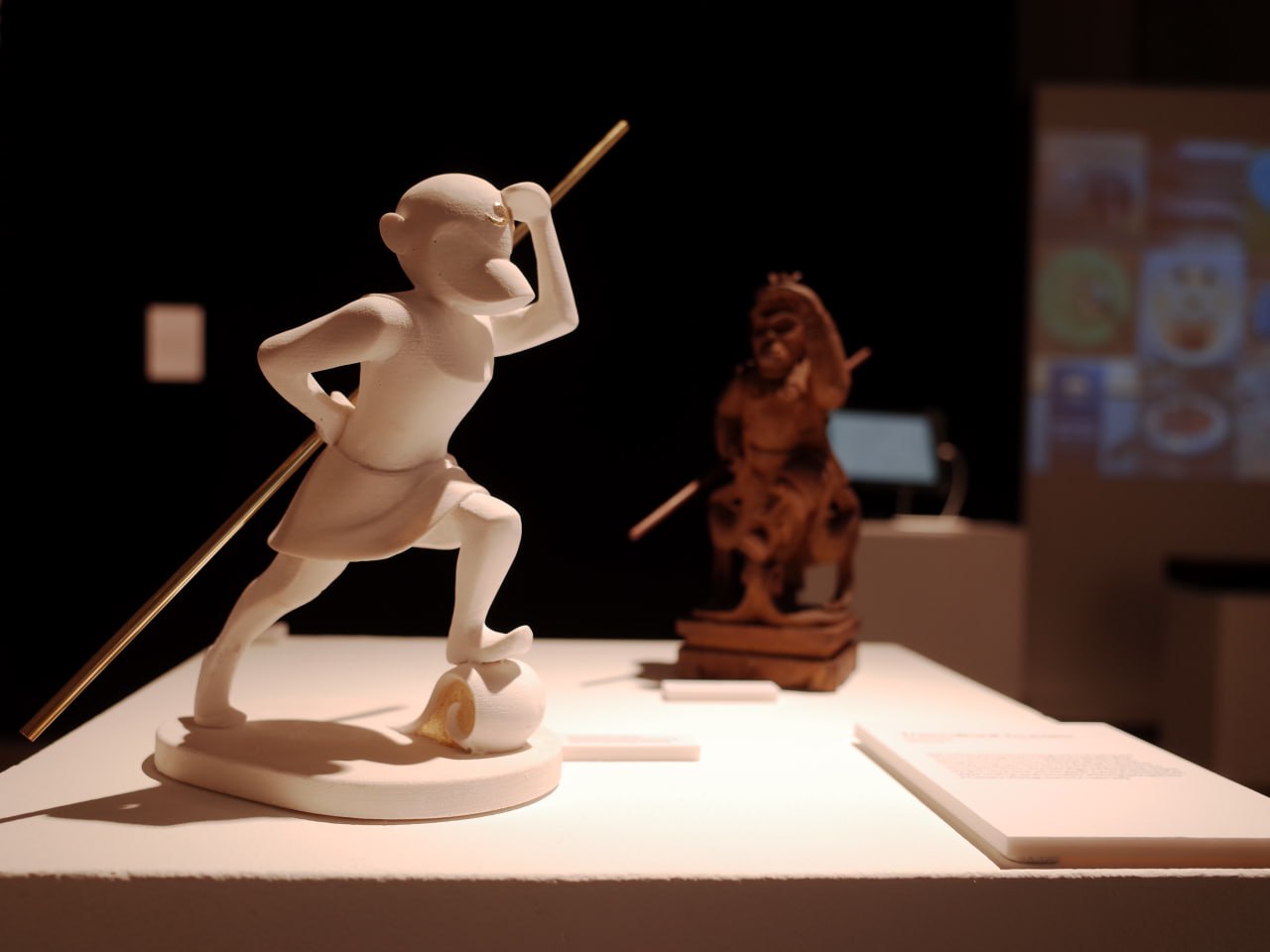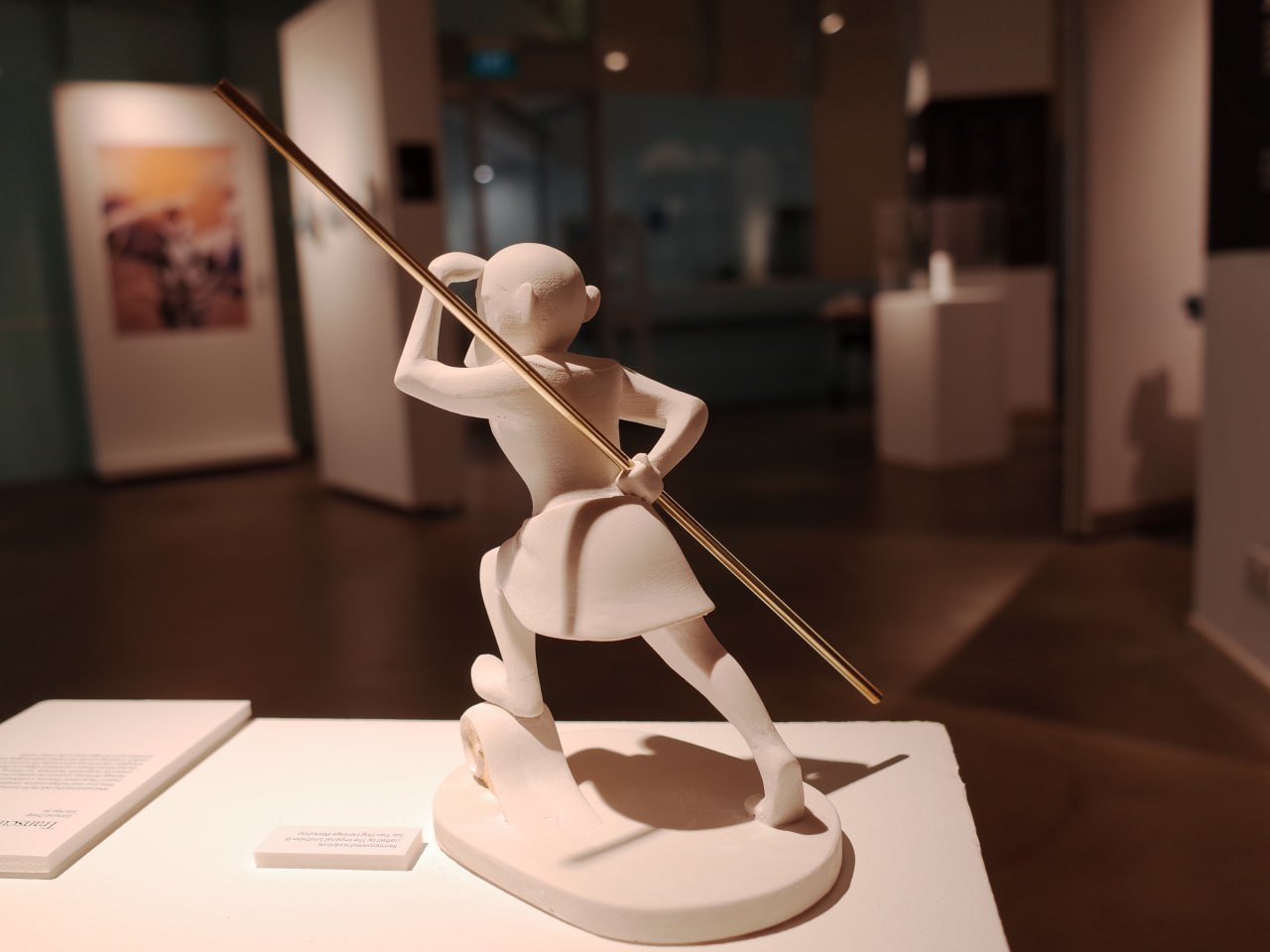2022
Design for Deities
Say Tian Hng Buddha Shop is a family-run shop specialising in handcrafted Taoist effigies, with its origins dating as far back to 1896. Steeped in rich history, all of the effigies are made in-house by the owners themselves for over 100 years.
The brief called for an innovative co-creation of a new contemporary product line, so that more non-Chinese audiences around the world can appreciate the stories of these mythological figures—and the timeless values they embody—in fresh, exciting ways.
Project is currently in development.
Team:
Sim Hao Jie
Client:
Say Tien Hng Buddha Shop
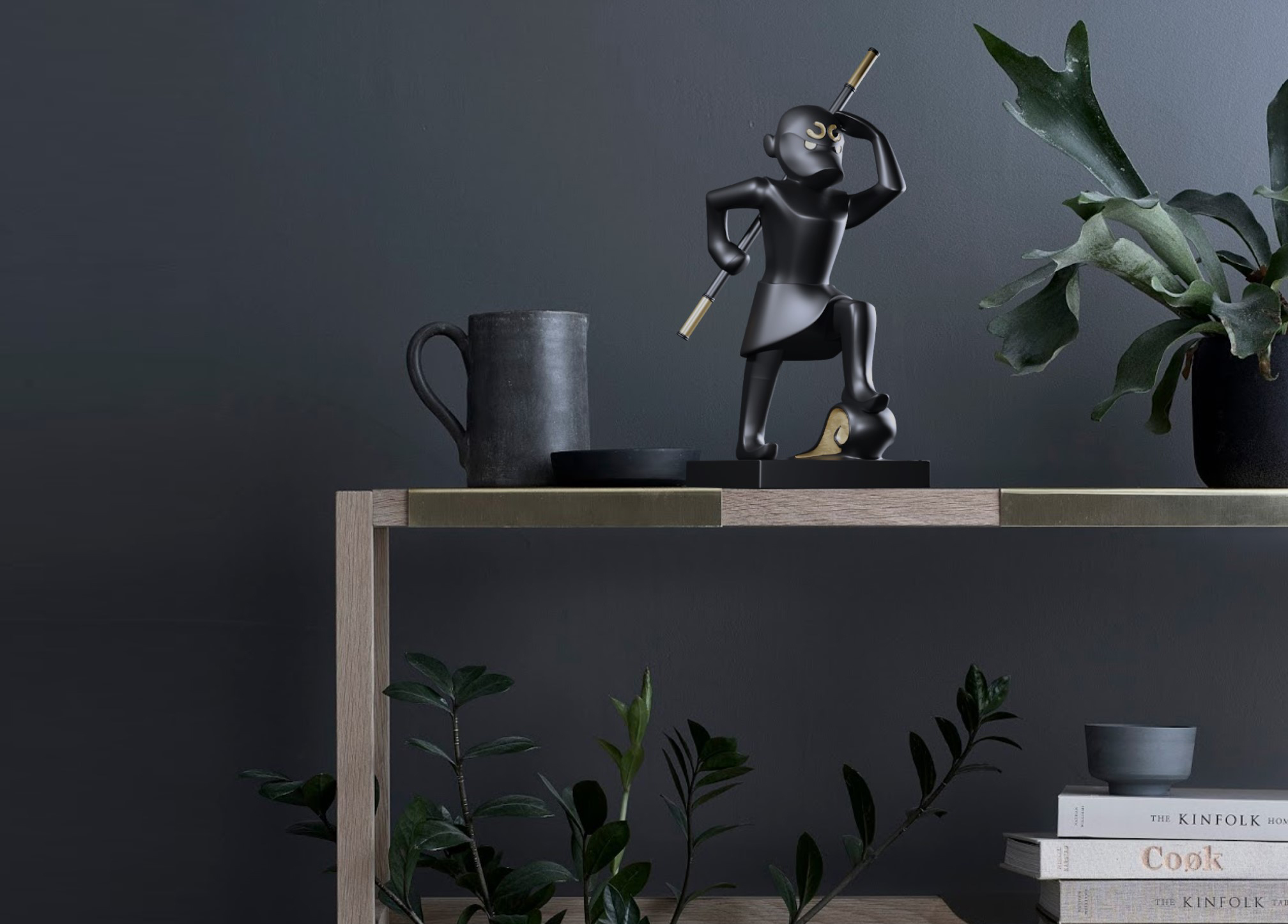
Site visit and interviews
The current 4th-generation owners were keen to revitalise their business for the future, and sought to find ways to reverse the decline of the 124-year-old shop.
The craft behind the making of each effigy is meticulous and intricate. We broke down the process into six general, distinct steps that an effigy craftsperson usually goes through.
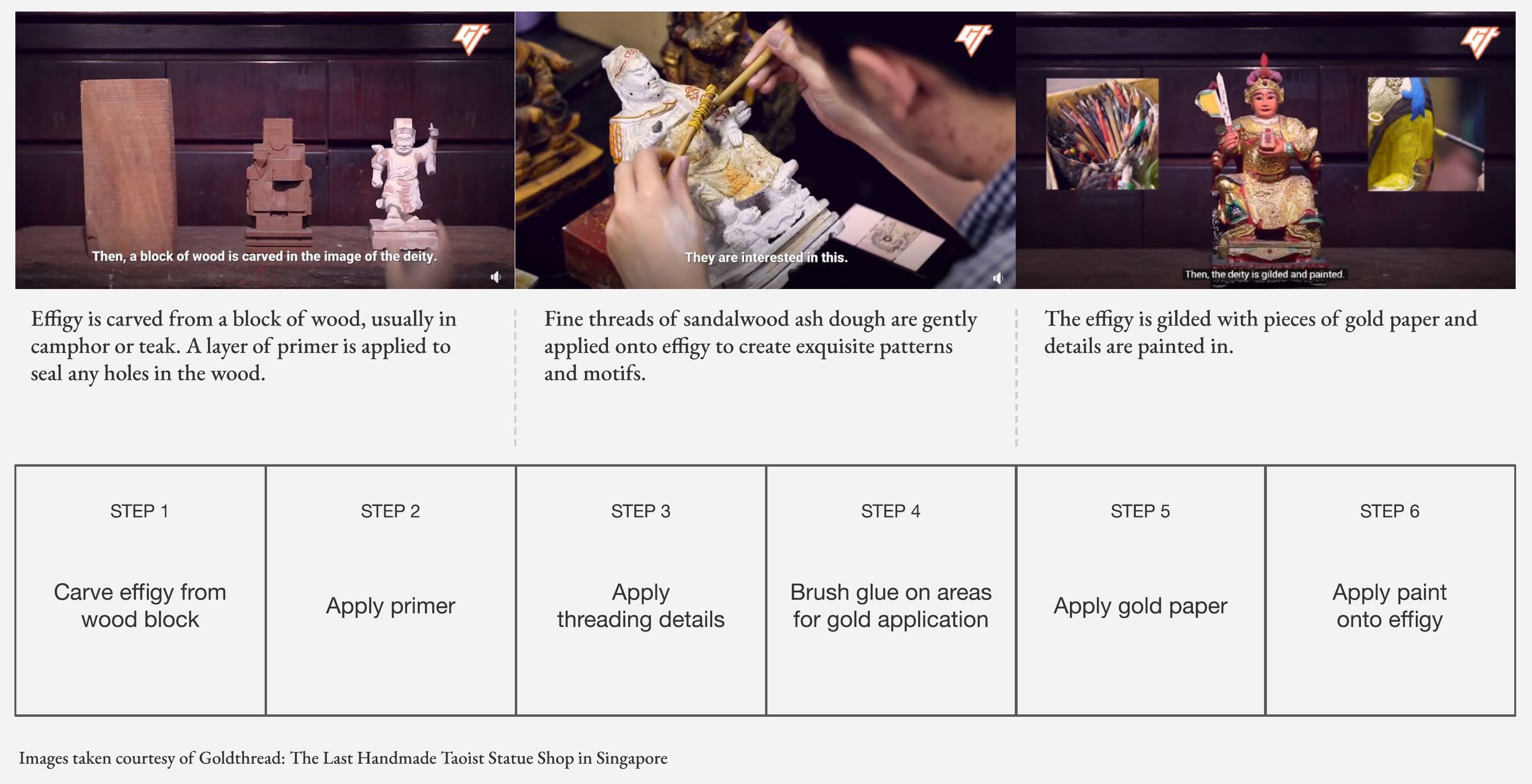
Observations
“All the items that the effigy is holding describe the status and characteristics that the deity is associated with.”
- Uncle Ng, third-generation owner of Say Tian Hng
In conversations with Uncle Ng, we realised that each deity’s possessions communicate stories and values unique to it.
For example, effigies of the Taoist deity Xuanwu are commonly recognized by the snake and turtle demons-turned-allies held under his feet, symbolizing the conquest and subduing of evil.
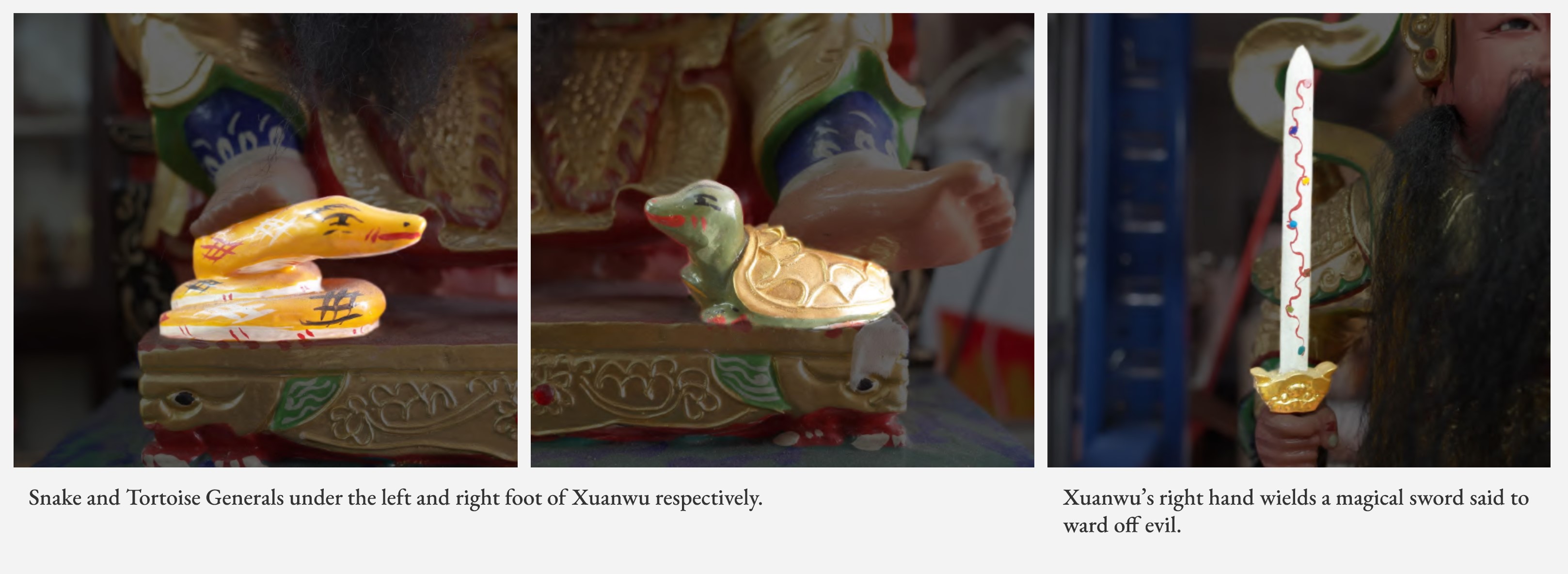

Design opportunity
“Can a deity be appreciated for its universal values and stories beyond its religious connotations?”
It led us to wonder: could the timeless stories and values of the deity be encapsulated and appreciated through its unique possessions and features? In a similar vein, we wondered: could the effigy be enjoyed equally as an objet d’art by a secular audience beyond one of idolatry?
We drew inspiration from the daruma doll—a symbolic object with deep religious roots, but also enjoyed equally by people all over the world as a popular gift and good luck charm.
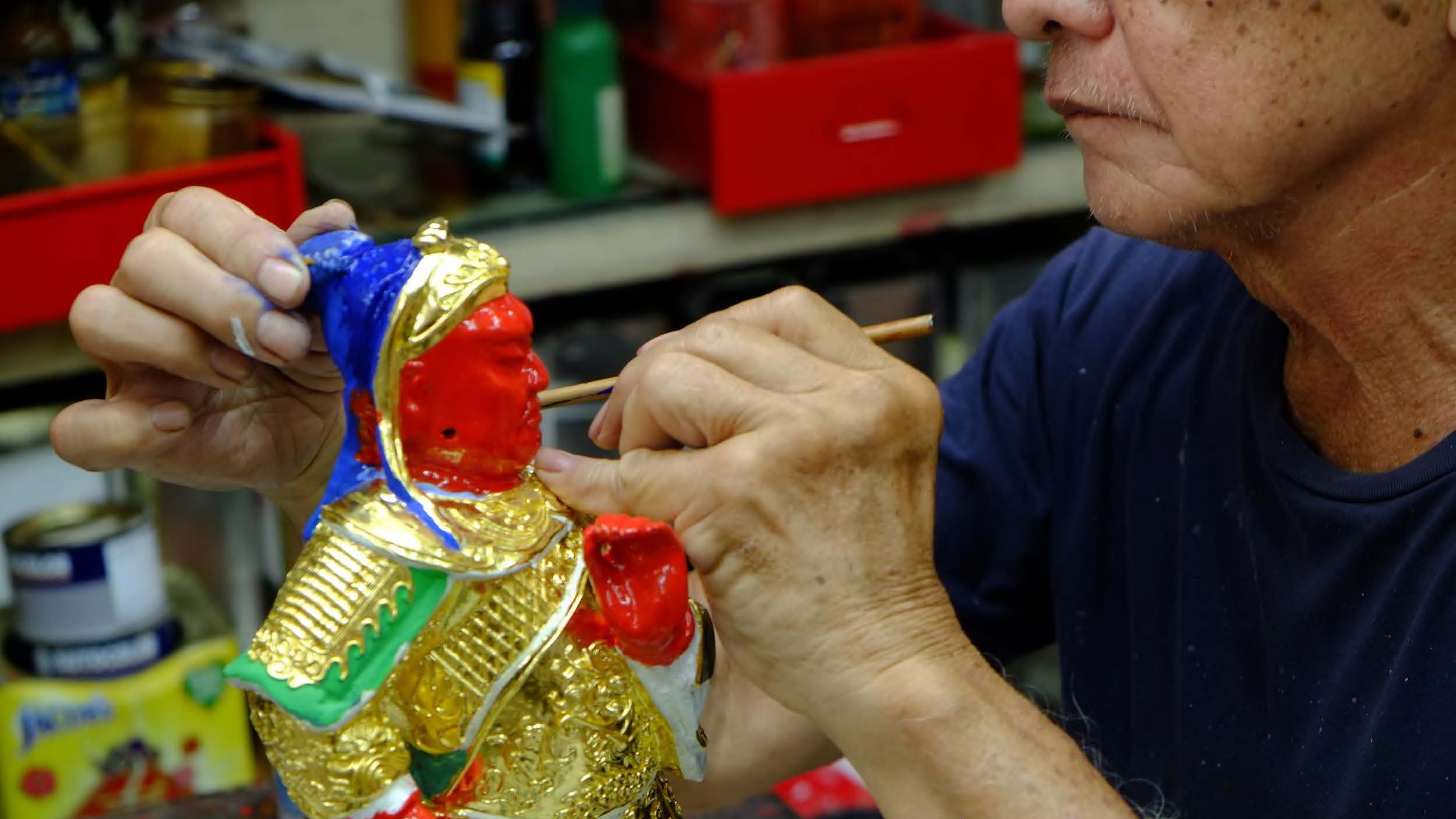
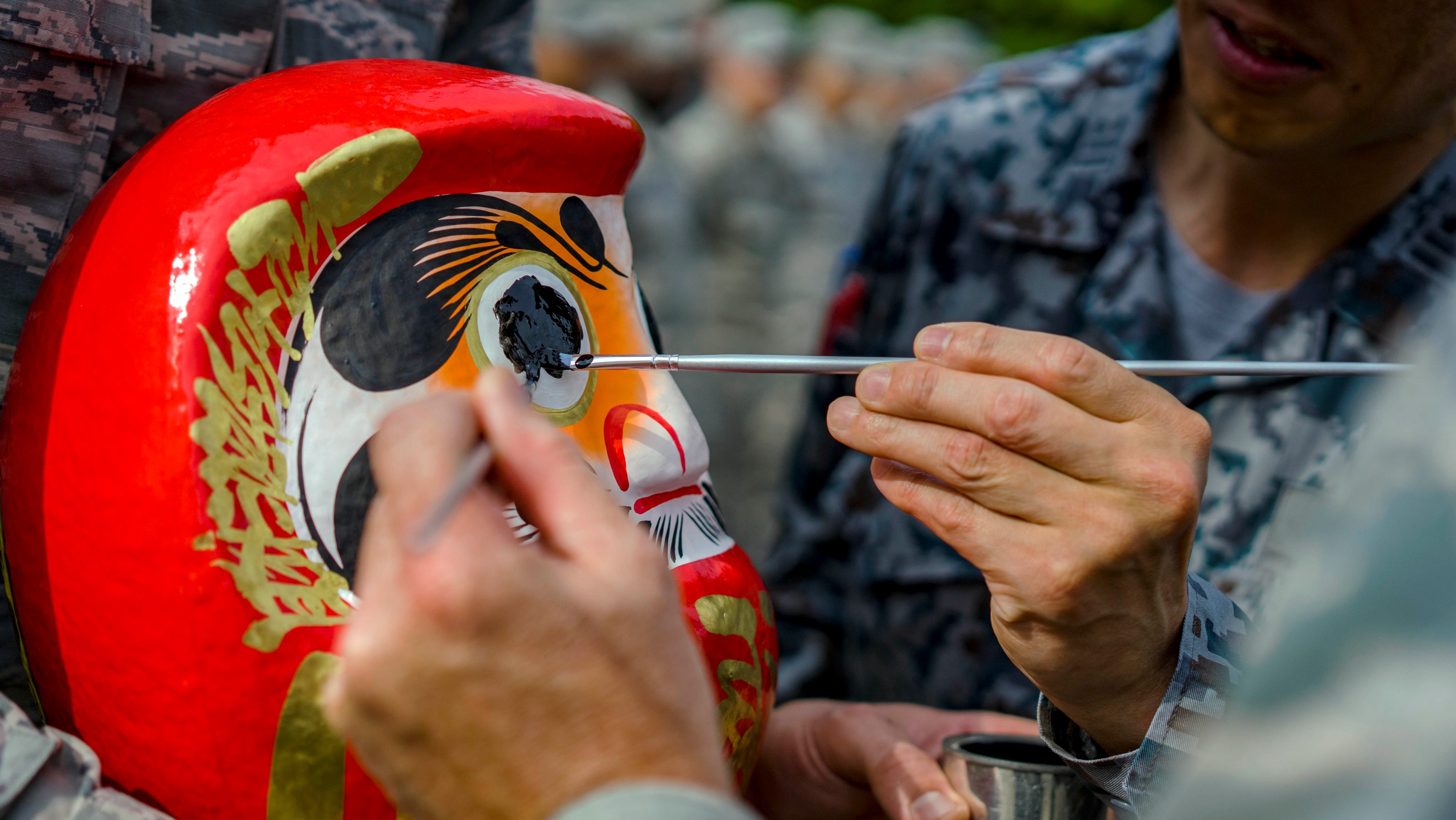
Concept development
We imagined an experience kit where the consumer can learn more about the folklore behind the deity, and personalize his or her own sculpture with the accompanying items provided.
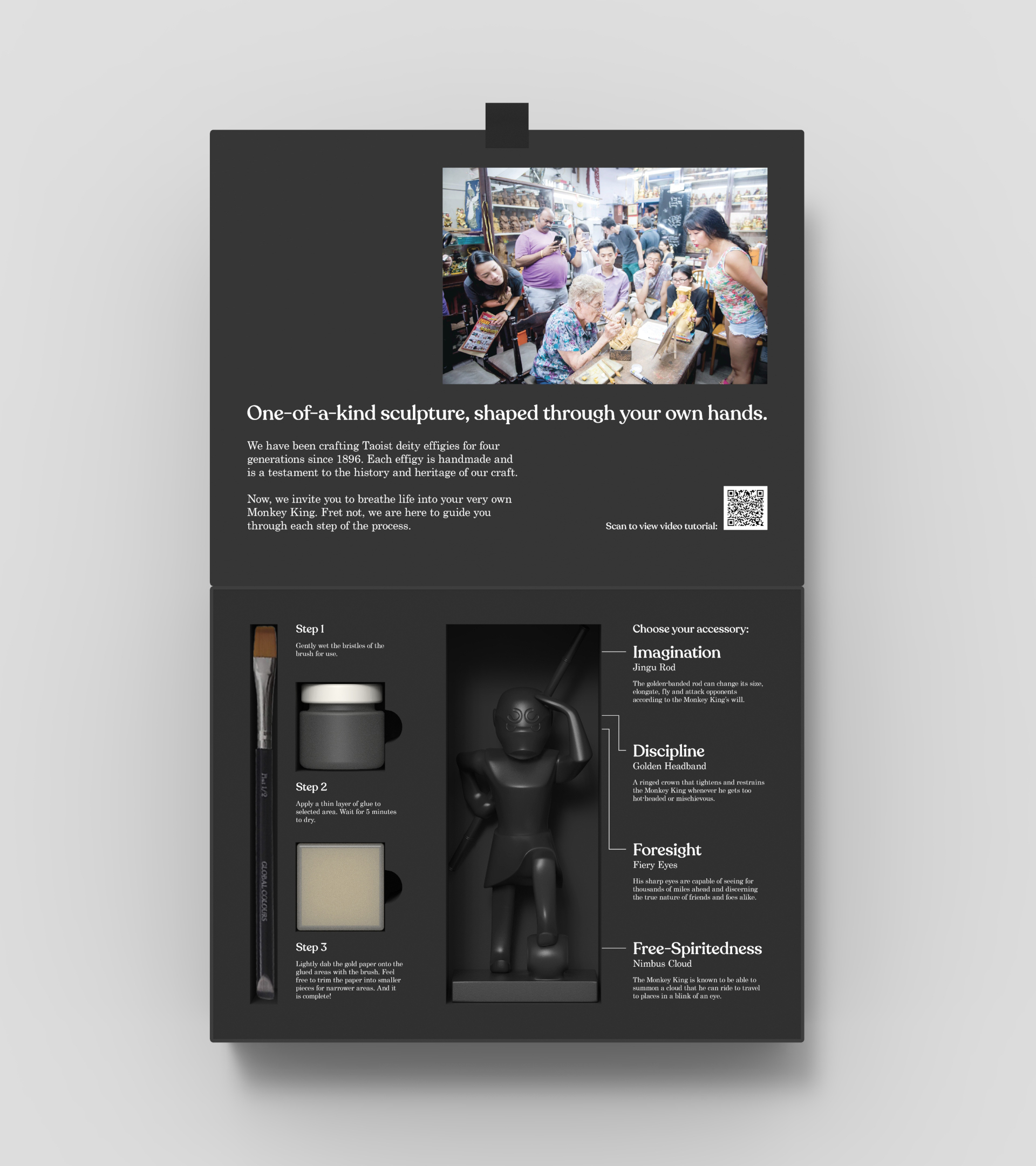
The sculpture pays homage to the existing form of Say Tian Hng’s effigies, while imbuing it with a softer, simplified yet succinct representation. The result is a more personable and contemporary portrayal of the deity.

Gold-gilding is an iconic part of the craft where thin gold foil is carefully applied onto selected areas of the effigy.
One can “highlight” the values that they wish for the sculpture to embody by adding finishing gold accents using the set of items provided in the kit.
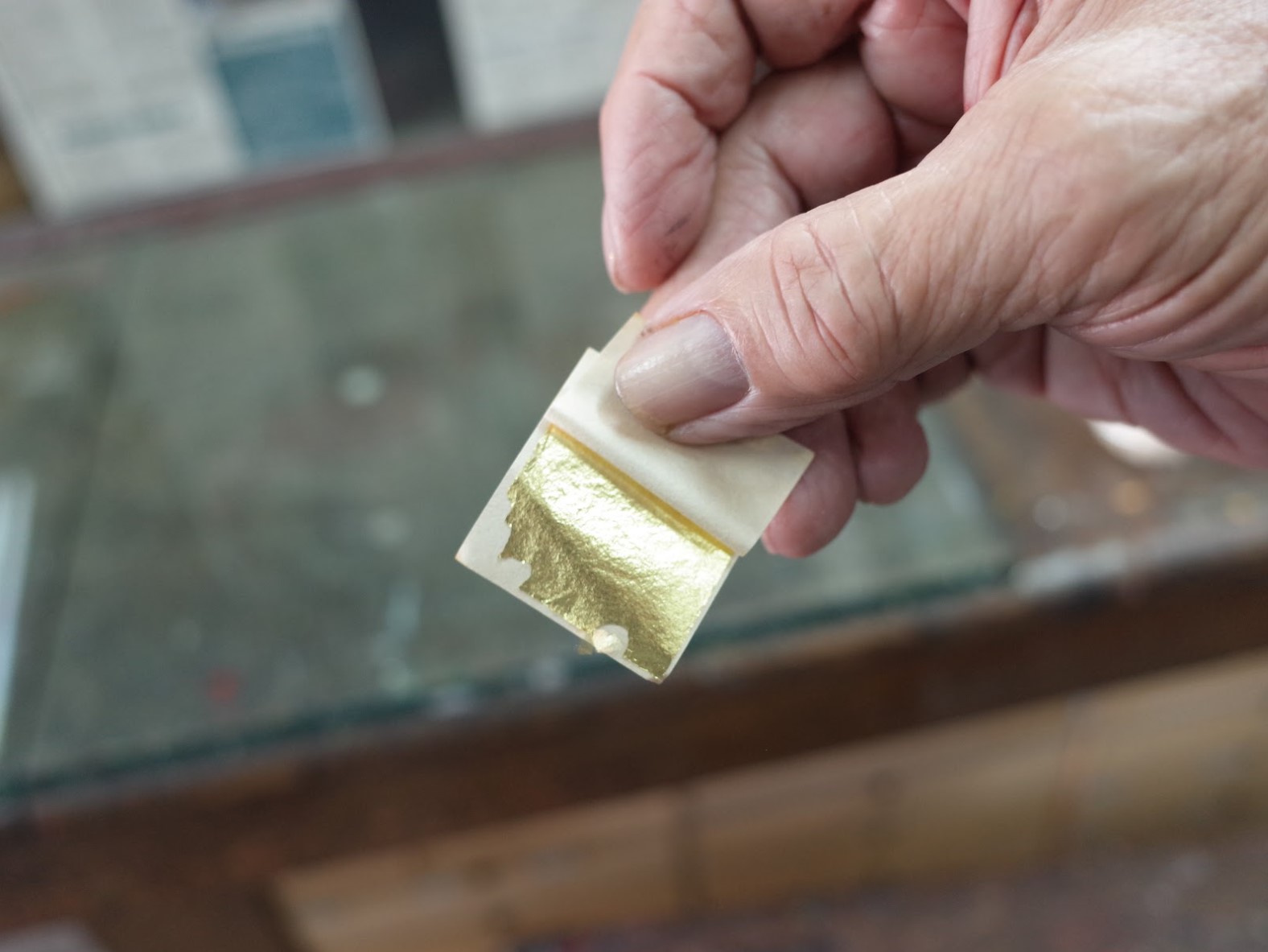


New ritual of experiencing craft
We envision a new way of experiential learning through making. By adding finishing accents to meaningful features and possessions, the consumer is not only being invited into the craft process, but also into the stories of these mythologies.
Such sculptures thus become conversation pieces that showcase relevant values in this modern day and age.


Future expansion of craft
Thinking beyond, we imagine a future where art aficionados can obtain Say Tian Hng’s deity sculptures on art and design retail channels.
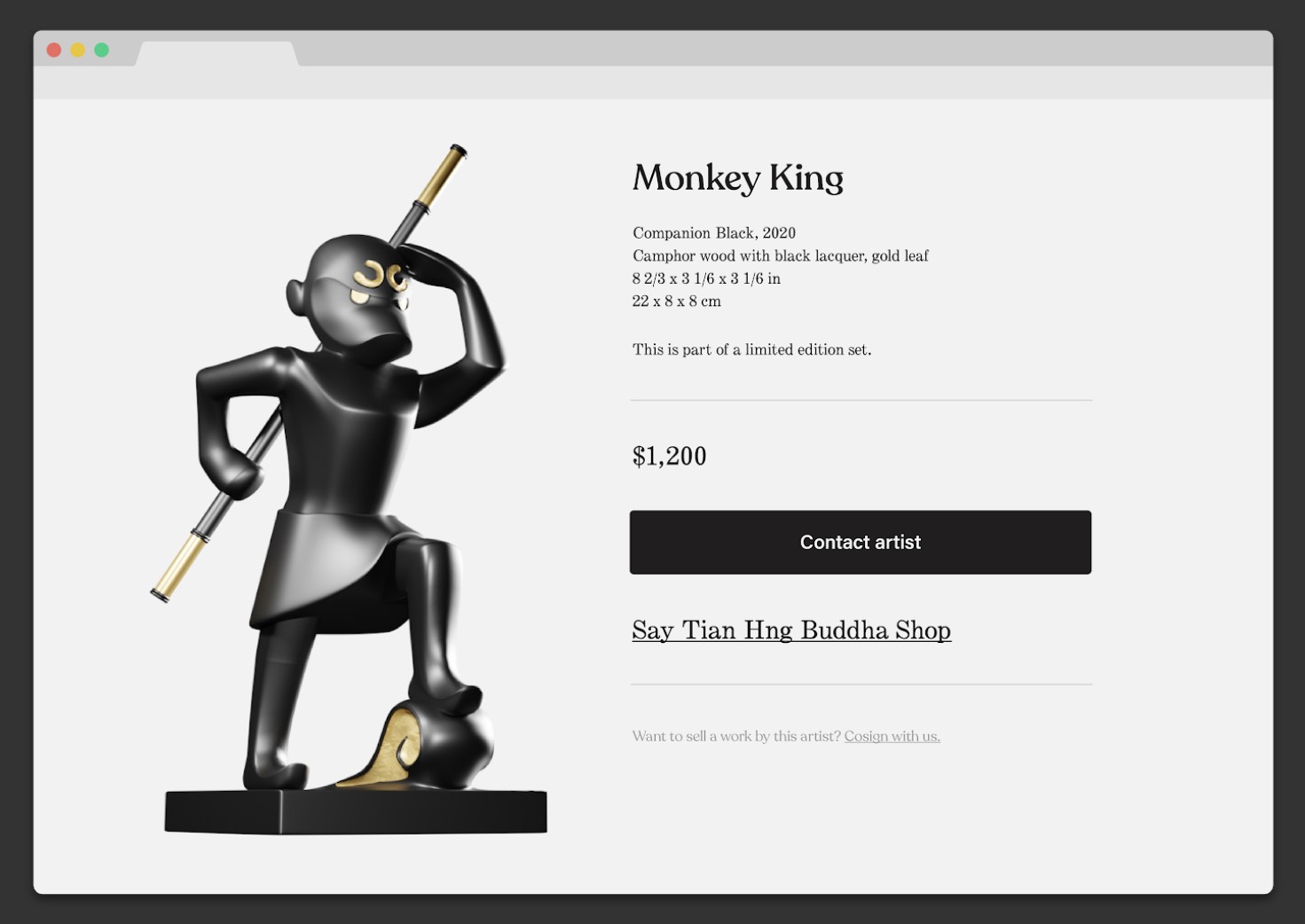
The concept can eventually be scaled across other deities, or even beyond Taoist effigies.
Through engaging the audience in Say Tien Hng’s craft right at home, we aim to build a sense of ownership and memory, resulting in a meaningful object that will accompany us for a long time.
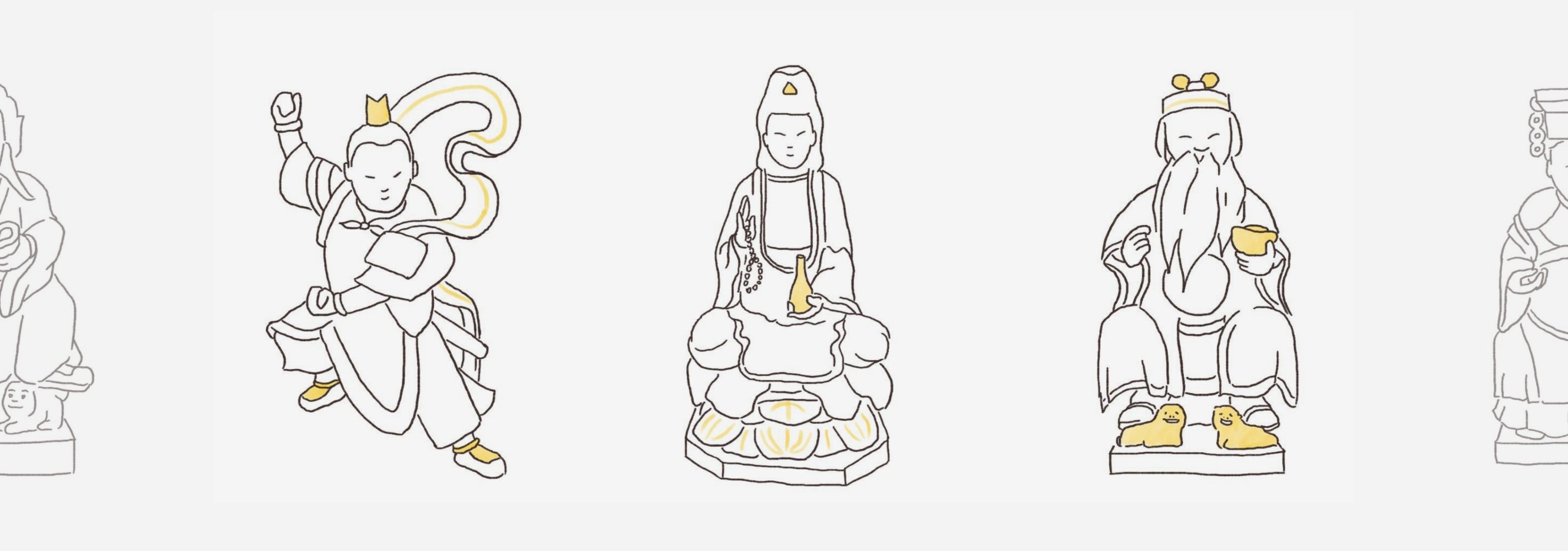
Current stages
We have since gone through multiple rounds of physical prototyping and form refinement, in collaboration with 3D artist Jei Wang and The Imperial Smithster. A prototype of the sculpture was showcased at the Tomorrow’s Testament exhibition curated by Nanyang Academy of Fine Arts, Singapore.
